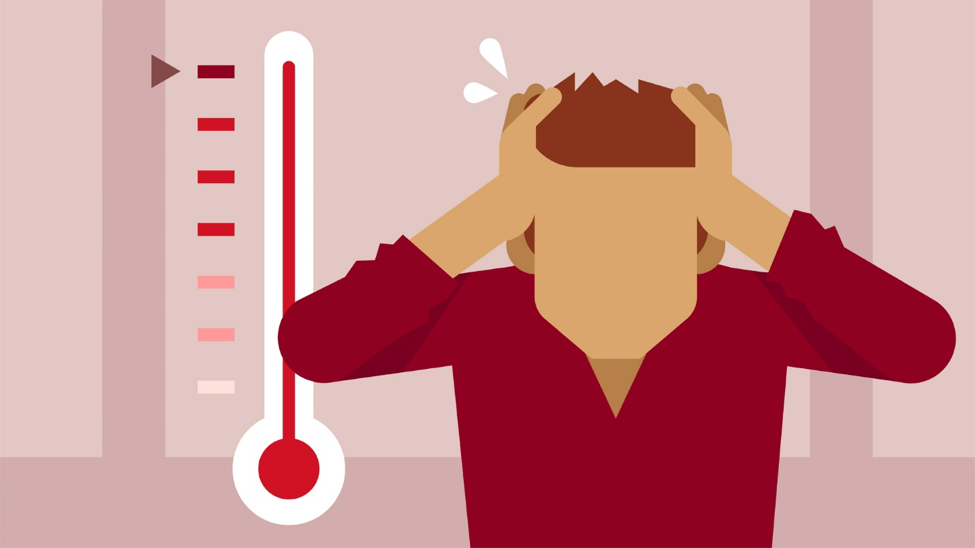Anger is a very powerful emotion that can stem from feelings of frustration, hurt, annoyance, or disappointment. It is a normal human emotion that can range from slight irritation to strong rage. Anger can be harmful or helpful, depending upon how it is expressed. Knowing how to recognize and express anger in appropriate ways can help people to reach goals, handle emergencies, and solve problems. However, problems can occur if people fail to recognize and understand their anger.
Suppressed anger can be an underlying cause of anxiety and depression. Anger that is not appropriately expressed can disrupt relationships, affect thinking and behavior patterns, and create a variety of physical problems. Chronic anger has been linked to health issues such as high blood pressure, heart problems, headaches, skin disorders, and digestive problems. In addition, poorly managed anger can be linked to problems such as alcohol and substance abuse, crime, emotional and physical abuse, and other violent behavior.
When angry, people tend to jump to and act on conclusions, and some of those conclusions can be very inaccurate. The first thing to do if you’re in a heated discussion is slow down and think through your responses. Do not say the first thing that comes into your head, but slow down and think carefully about what you want to say. At the same time, listen carefully to what the other person is saying and take your time before answering.

Recognizing Physiological Signs of Anger
The first step in effective anger management is to learn how to recognize when you are angry. Some angry people see their emotions as a black or white state. They are either raging mad or they are calm. In reality, anger is not black and white, but rather quite gray. Anger occurs on a continuum between rage and calm where most of the time people experience some gradation of anger between these two extremes.
The same people who tend to see anger in terms of extremes sometimes have difficulty recognizing when they are experiencing intermediate anger states. Luckily, most people experience a number of physical, emotional, and behavioral cues that they can use to let them know when they are becoming upset.
Physical Symptoms of Anger:
- clenching your jaws or grinding your teeth
- headache
- stomach ache
- increased and rapid heart rate
- sweating, especially your palms
- feeling hot in the neck/face
- shaking or trembling
- dizziness
Emotional Symptoms of Anger:
- like you want to get away from the situation
- irritated
- sad or depressed
- guilty
- resentful
- anxious
- like striking out verbally or physically
Behavioral Symptoms of Anger:
- rubbing your head
- cupping your fist with your other hand
- pacing
- getting sarcastic
- losing your sense of humor
- acting in an abusive or abrasive manner
- craving a drink, a smoke or other substances that relax you
- raising your voice
- beginning to yell, scream, or cry

Strategies for Managing Anger
Know your triggers
Recognize and make a list of situations or circumstances that make you angry (for example, running late, and waiting in line). Knowing your triggers ahead of time can help you avoid them, or feel better prepared to handle them and stay in control when they arise. Keeping and writing in a diary would be helpful.
Notice the physical warning signs
Recognize what is happening in your body when your anger starts to rise (for example, pounding heart, grinding teeth, tightness in the chest). Acknowledging those physical warning signs will give you a better opportunity to calm down and de-escalate the situation before things get out of hand.
Check your thinking
When charged with anger, our thoughts can be very exaggerated or irrational. To regain control try replacing unhelpful thoughts with more constructive ones. For example, rephrase negative self-talk such as “I can’t stand it, this is unbearable” to something more caring and compassionate like “I feel frustrated, and that is understandable, butI don’t need to lose my cool, I am okay”. Write a list of more helpful thought statements, and keep them somewhere accessible (such as your wallet). This way, you can easily refer to them in the moment if you need to.

Take time out
If you are becoming angry, give yourself the space you need to cool off. Postpone the discussion and arrange a time to talk when everyone involved has calmed down. Then step out of the room or go for a walk. As you take this time for yourself, plan how you intend to stay calm when the conversation resumes.
Distract yourself
There are many ways to shift your focus from the situation at hand, so consider what works best for you. You might try listening to music, talking to a friend, watching TV, or exercising.
Use relaxation techniques
Reduce stress and tension in your body through mindfulness and relaxation techniques such as grounding, long and deep breathing, or progressive muscle relaxation. You can learn more about these techniques by reading online resources.

Be assertive, not aggressive
A common misconception is that in order to be assertive one has to be aggressive. Being assertive means confidently communicating your needs in a clear, direct, and respectful way, while being prepared to negotiate with others. On the other hand, being aggressive can involve intimidating, humiliating, or disregarding the needs of others in order to get your own way.
Rehearse anger management skills
Practice makes perfect, so dedicate some time to visualize or role-play your anger management strategies. Consider a scenario that ordinarily would make you angry and imagine resolving the situation without anger. Try rehearsing with a friend or practice saying things in an assertive (rather than aggressive) way in front of the mirror.
Consider other underlying emotions
Sometimes anger is secondary to other underlying emotions. For example, anger might be a result of feeling fearful, embarrassed, or sad. Acknowledging these underlying emotions can be scary and uncomfortable at first, it can seem easier to just be angry. However, connecting honestly with our emotional experience can help us understand and resolve our anger.
Seek professional support
Working with a psychologist can be a helpful way to understand your anger, identify potential triggers, and develop techniques to manage and express your emotions in a healthy way. The psychologist can also link you in with other helpful resources including anger management courses.

Treatments
Talking treatments involve talking about your problems with a trained professional (such as a counselor or psychotherapist) who can help you explore the causes of your anger. This can help you work through your feelings and improve your responses to situations that make you angry. There are different types of talking treatments and some are specifically tailored to anger issues.
Counseling is usually a short-term treatment where you might talk through a specific issue, such as outbursts of anger with your partner or in the workplace, and try to understand how you could manage those situations differently. Many workplaces, higher education institutions, local charities, and GP surgeries offer free counselling services to their employees, students, or local residents.
Psychotherapy is another option that often lasts longer than counseling and tends to go deeper into past experiences. Your focus here may be on learning more about yourself to help you understand why you express your anger the way you do or why certain situations make you angry.
Cognitive behavioral therapy (CBT) is highly structured short-term talking treatment that examines how your thoughts, feelings, and behaviors affect each other, and aims to teach you practical skills to change this. CBT is the most commonly offered talking treatment. This type of therapy is very beneficial.
Struggling with anger? Let us help.

